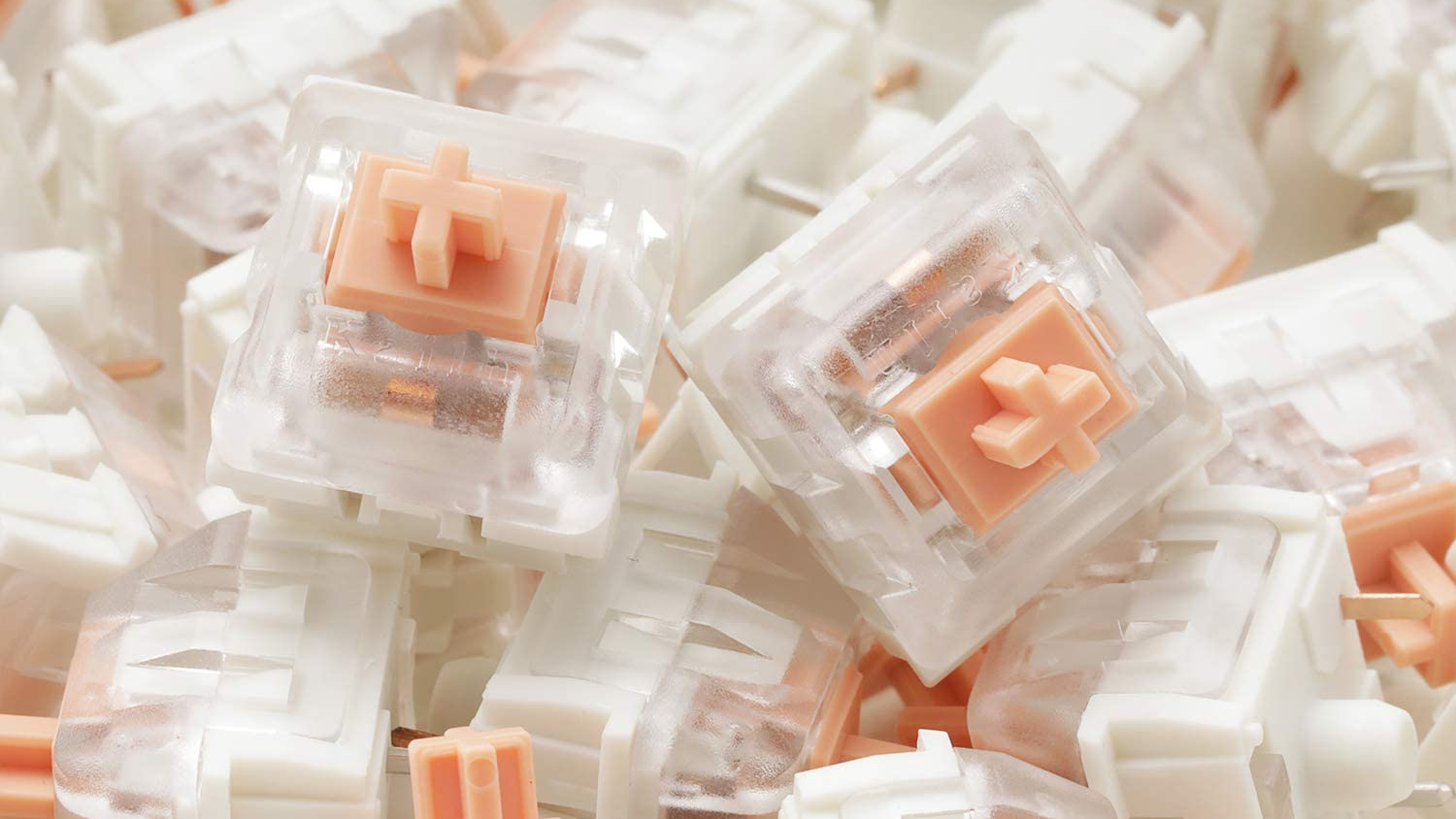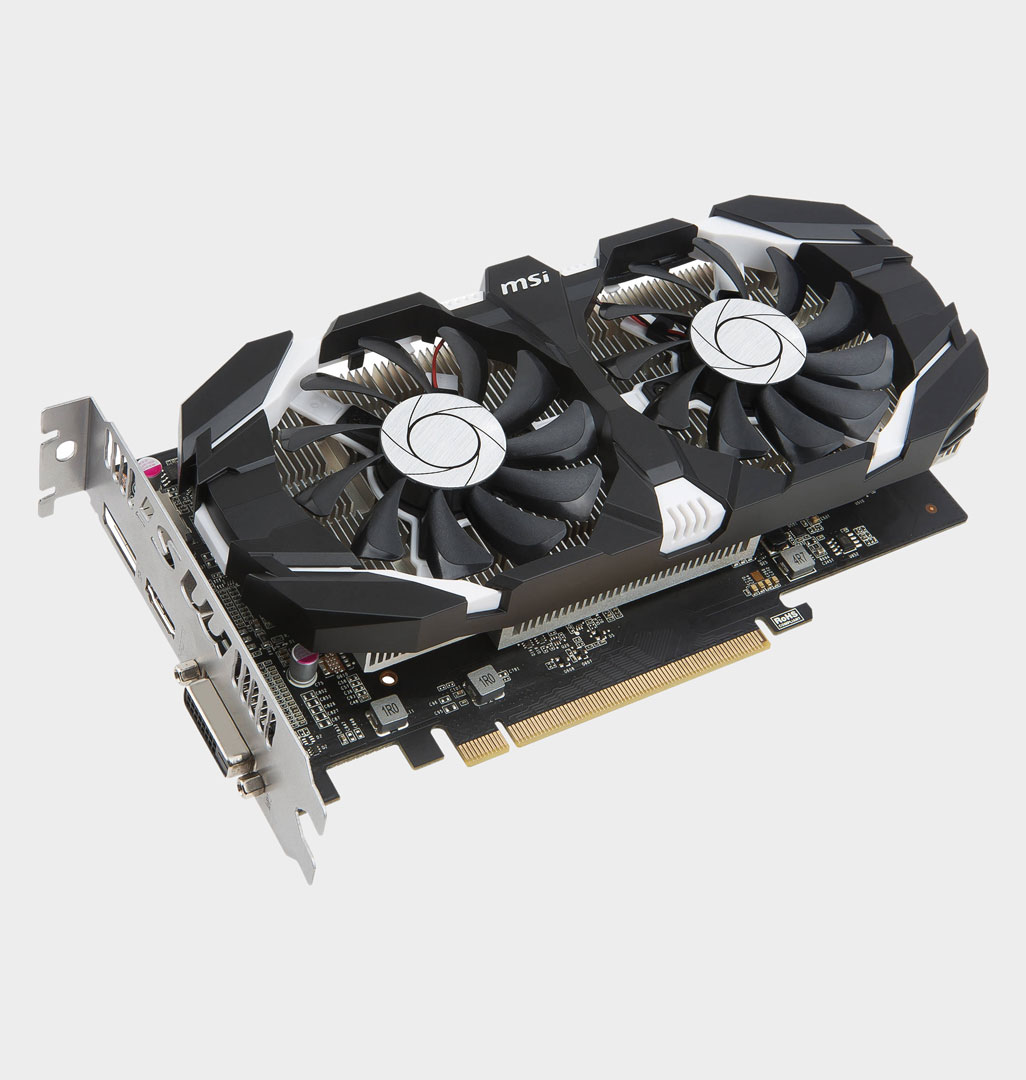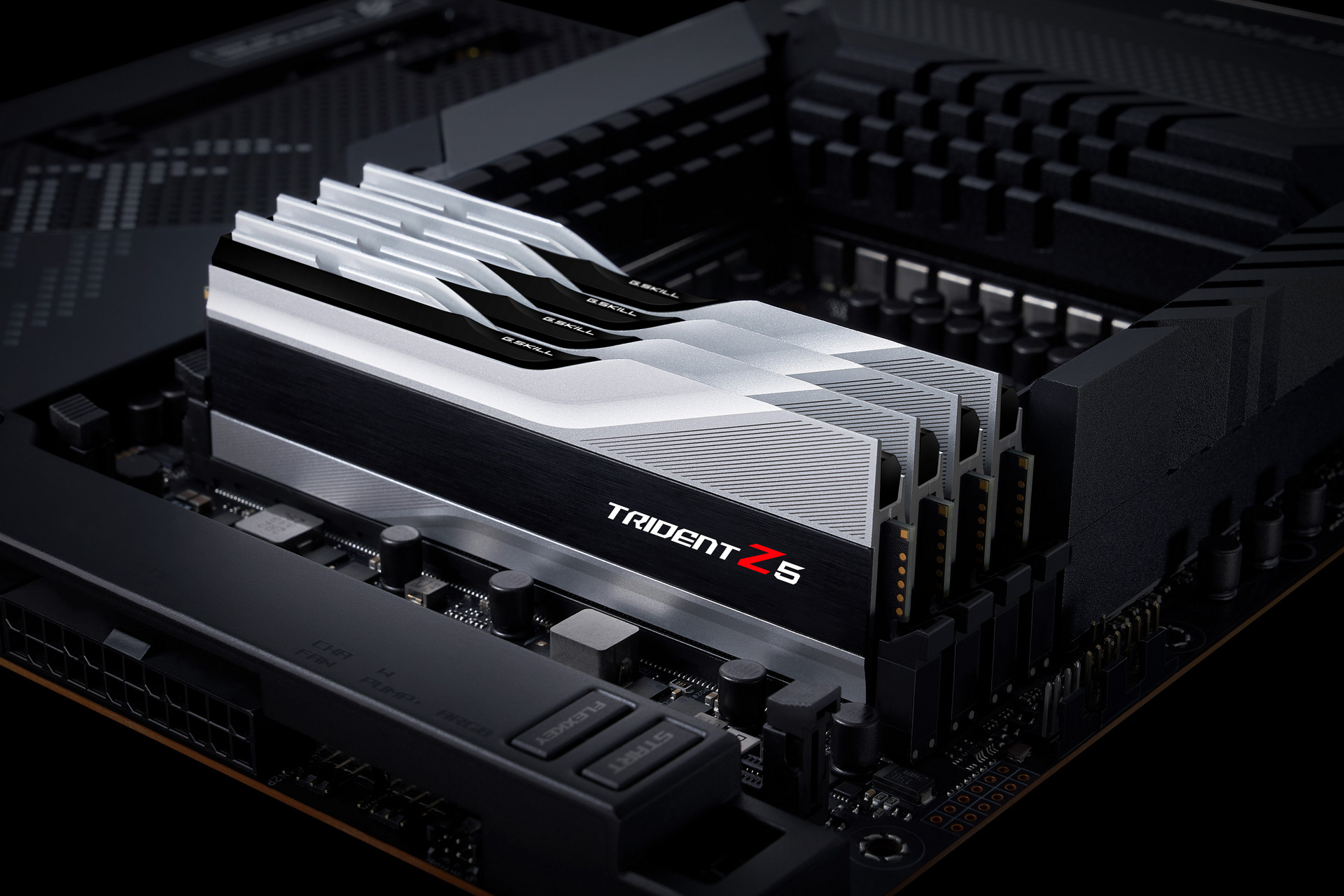PC gaming in 2021: The hardware highlights and lowlights
No matter what's been going on this year, there have been reasons to be cheerful despite the pandemic backdrop, supply crisis, chip shortage, and crypto mining explosion. There is PC gaming hardware to be had, and you can buy a new GPU if you really, really put in the hard graft. And, y'know, the money.
The end of this year has seen some of the best mainstream gaming CPUs ever released, with Intel's Alder Lake Core i5 chip wowing us, and the GPU makers have been hard at work to ensure you can squeeze as many frames per second out of your silicon as possible through fancy, almost invisible upscaling tech.
And if your current rig still can't deal, and there's no upgrade path on the horizon for you, then PC game streaming has come of age.
But as sure as there have been highs, there have also been many lows when it comes to the PC tech of 2021, and your resident PC Gamer hardware team is here to share their personal highlights and lowlights of the past year in PC gear.
Dave James, Hardware Lead

My hardware highlight for 2021: My PC is in exactly the same configuration as this time last year, I've not switched CPU, despite the impressive showing of Intel's Alder Lake chips—that's something I want to look at next year—and I was lucky enough to bag a high-performance GPU in 2020.
For me, 2021 has been all about nailing my PC setup itself and, as a writer, editor, and PC gamer, my keyboard is the most important part. And what's the most important part of the keyboard? No, not fancy, per-key strobing illuminations, I'm talking about the switches.
Enthusiast keebs are positively mainstream now
My hardware highlight of this year was replacing all the switches on my Mountain keyboard with specially selected ones picked up off Drop. Yes, I've become one of those people.
I love the fact enthusiast keyboard stuff is now so readily accessible. There are a host of simple, but great boards that will ship without switches, or with the ability to hotswap whatever type of mechanical switch you prefer the feel of. No longer is it a matter of trying to find that one slab with a compatible PCB, enthusiast keebs are positively mainstream now.
Though that also means enthusiast keebs have an enthusiast price point. Barebones boards are still pricey, and every manufacturer making PC peripherals has taken a look at the rise of the high-end keyboard segment and said: 'hey, we can make a $200 keyboard, too.' They're everywhere, with even the likes of Logitech offering hotswappable options. Expensive hotswappable options.
So yeah, very much a luxury, but in a PC hardware landscape where we can't spend money on any other component apart from our SSDs, I'm happy to dive down into the keyboard rabbit hole and get anal about switches. And so I have, pulling the trigger on a set of gorgeous Halo True switches that are oh so satisfying to type on.
They're smooth switches with a mild tactile hump, and a level of resistance that makes every keystroke feel defined and deliberate. And the stems are pastel pink.
Though my finished keyboard, with its beautiful type-feel, is definitely a hardware highlight, ripping out each of the original switches individually most definitely was not. That's an exercise in pain management and frustration right there, and I feel like I might have a left a fair bit of my own flesh inside the board. But it was worth it,and I'll happily just keep typing away until someone stops me.

My hardware lowlight of 2021: Yeah, I'm going to pick on graphics cards for my lowlight. To be honest they deserve it, the teasing wee beasties. Tempting us with their slick performance, juicy specs, and blink-and-you'll-miss-it availability. But it's not the technically released GPUs that have provided me with the biggest hardware bum note of 2021, it's the ones that didn't make it to our desktops.
I'm looking at you, Intel.
We were promised that Intel would release a discrete graphics card in 2020, but the goal posts have shifted, and as 2021 comes to a close we're still waiting for a third entrant into the maelstrom that is the Nvidia and AMD dominated GPU market. It's especially frustrating given that there are so few graphics cards around, and having another manufacturer at least giving us another option would be more than welcome.
I know, 'entitled PC gamer wants new thing now', is not a particularly good look, and there are justifiable global reasons for any delay to manufacturing a big chunk of PC gaming silicon right now. But if there was ever a time for Intel to drop its first competitive discrete GPU it's when it's all but impossible to bag one of the competitors' cards. By virtue of merely existing Intel's Alchemist graphics cards would have quickly sold out like all the rest, something I doubt even in Raja's wildest dreams it could have expected when Intel announced the project back in 2018.
But, as I said, the delays are understandable, expected, and potentially for the best. At this point, with the leaks that have slithered out about the Alchemist GPU's silicon, the hardware looks pretty solid, but making sure it's produced in anything like a saleable volume will be tough. Possibly more importantly, however, any delays will only serve to ensure the software stack is as robust as possible when the new discrete Xe chips finally hit our gaming PCs sometime next year. Probably.
Jacob Ridley, Senior Hardware Editor

My hardware highlight for 2021: Despite the vast emptiness of Best Buy's graphics card section, it's not been an entirely dismal year for all forms of PC hardware. From SSDs to CPUs to RAM, we've seen healthy performance gains and price reductions across these past 12 months.
But those aren't my hardware highlights of 2021. Rather it's one of the few great developments in PC graphics this past year: Not a brand shiny new RTX 3080 Ti under every good gamers pillow, but rather the rise of upscaling technologies.
Upscaling technologies have pushed gaming performance more than any other technology, architecture, or upgrade for more people this year. That's partly because you simply couldn't buy a new graphics card—the prime driver of frames per second—but also due to the increasing maturation and prevalence of Nvidia's Deep Learning Super Sampling (DLSS) and AMD's FidelityFX Super Resolution (FSR) in games.
Both technologies go some way to increasing game performance through resolution manipulation—or are they manipulating us with pixel trickery? Whichever way you look at it, these upscaling technologies are becoming something we prefer to have on rather than off, and that's largely due to how incredibly adept both technologies are in making a smaller image look like a bigger one, with no major downsides.
We're no doubt still in the early days of upscaling, and most definitely in how artificial intelligence is used to do it, and I suspect every year from now will be another big leap in the right direction. For one we're going to see Intel release XeSS next year. This will incorporate both a proprietary Xe-exclusive version and a more widely compatible version for cross-vendor support. It's worth mentioning, then, that with AMD's cross-platform FidelityFX Super Resolution, and Nvidia's recently announced Nvidia Image Scaling, we're about to see all three major GPU manufacturers offer fence-free upscaling technologies no matter what powers your PC.
That's quite a development between these titan's of PC gaming, and one that should have you hopeful for even more upscaling magic in the new year. After all, the next big leap in PC gaming performance isn't just about bigger, faster graphics cards.

My hardware lowlight for 2021: Unsurprisingly my lowlight is to do with graphics cards. What can I say, it's the component we PC gamers crave most. Broadly speaking, my lowlight is to do with the lack of graphics cards this year, though that seemed too blatantly obvious to warrant even writing down. Rather I want to take you all back to the optimistic days of February 2021. Or were we already tired and frustrated by then? Probably the latter.
A true zero to hero story, though sadly we wish it wasn't
Just eleven months ago, rumour from Tech Yes City suggested that the Nvidia GeForce GTX 1050 Ti was making a less-than-triumphant comeback. Nvidia and its partners were said to be restocking shelves in Australia with this long outdated graphics card from the Pascal generation, first released back in 2016. Though, according to Asus, the card was never officially discontinued, it was de facto as end of life'd as you'd expect a four-year-old entry-level graphics card to be at that point in time.
In the UK we found similar restocks afoot. Over at Overclockers, the GTX 1050 Ti had returned and was selling for £189. A pretty penny for this wizened graphics card. That same model of card, Palit's StormX, was previously marked unavailable on the UK retailer's site, yet somehow was now in high demand. The same goes for Scan, where the card went from 'end of life' status to 'hot seller' in under four months.
A true zero to hero story, though sadly we wish it wasn't. The whole affair was no doubt a sign of the dire circumstances we find the graphics card market in to this day—a symptom of a semiconductor shortage that's ravaging all manner of tech, from cars to consoles.
Another similar event in 2021 was the release of the Nvidia RTX 2060 12GB, built with the Turing tech of yesteryear. I would say this is the lowlight of 2021, for many of the same reasons as above, though with stock seemingly nonexistent, I'm not sure it even counts as happening this year. Nvidia says it expects stock to filter through towards the end of December and through January, just a touch tardy from the card's December 7th release date.
I actually did also find one on sale in the UK while writing this, though it's not from a familiar retailer and it's going for £515…. Actually, let's not talk about it.
Alan Dexter, Senior Hardware Editor

My hardware highlight for 2021: Despite everything, SSDs have had a great year. While the industry has struggled to get some tech out of the door, SSDs haven't been too obviously affected, and in fact, prices across the board have dropped throughout the year. There were plenty of deals over the Black Friday weekend, and even now there are savings to be had on some seriously big hitters.
If you haven't upgraded your storage this year, then there's still a good chance you can grab something before 2021 ends.
Storage may not be the most exciting aspect of your gaming PC, but your drive does make a difference, and there's a lot to be said for the current state of the SSD market. Not only are we looking at some seriously speedy drives at great prices, but the size of these drives is finally getting to the point where you can build a gaming rig that doesn't have you turning to hard drives or cheaper SATA SSDs to get the capacity up.
I've been recommending 1TB as the best option for a boot drive for all but the most budget-focused of machines for a while now, and with 2TB drives dropping down to as low as $200 for some PCIe 3.0 drives (such as the WD_Black SN750), you can enjoy speedy load times and fast file transfers in Windows all the time, and not just on your OS drive.
PCIe 4.0 NVMe drives are where the serious performance is at, of course, and the fastest drives released this year have all been vying for the top spot. If you're in the market for a top performer, then you have plenty of options right now, although as ever you've got to weigh up the whole package, including the price.
The fact that Alder Lake, and Rocket Lake, now support PCIe 4.0 SSDs means that things are a tad simpler now as well. Until this year, only AMD's Zen 2 and Zen 3 chips supported the faster standard, but with a more even playing field we should see broader adoption, and thus developers can start to make use of the faster transfer rates on offer.
The last thing missing from all of this is Microsoft's DirectStorage API, which should land sometime next year. Hopefully, in the big spring update. This promises big things for game development and how our machines handle massive detailed worlds. It'll be a while before we really feel the benefits of this tech, but it is coming, and it all looks very promising.
In the meantime, having a couple of speedy NVMe SSDs in my rig has made Windows that much faster to deal with. And I know that games are loading as fast as they can.

My hardware lowlight for 2021: Where to start? There have been so many problems with the supply chain this last year there's a temptation to just wave at the general state of the entire hardware industry and walk away. But I won't do that, I'll be a bit more specific about what has bummed me out the most as the year draws to a close.
I like building PCs. Serious budget gaming PCs that try and do it all for as little as possible through to big over the top ones that barely look at the final ticket price. I'm also down with a sensible mid-range build that offers great performance in game without requiring a second mortgage. You know the kind of system I'd build for myself if I wasn't in a constant tornado of kit needing to be reviewed only to be ripped out of my system and sent back to the manufacturer.
Right now, I'm looking to build an Alder Lake machine. Specifically, I'm eyeing up the Intel Core i5 12600K with a mind to building the kind of gaming rig that will last me for a couple of years at least. I'll have to pretend that graphics cards are actually available, and just use whatever isn't being used for testing right now—which could be my ageing GeForce GTX 1070 that has to be downclocked in order to actually run properly, but that's a problem for my future self to tackle.
The sensible money is all pointing to DDR4 however you spin it
The problem for any prospective Alder Lake build is on the memory front: there just aren't any DDR5 kits out there. Well, there aren't any memory kits out there sporting anything like reasonable price tags. Right now, you can get a single 16GB stick of DDR5 4800MHz for $299.99 on Newegg. That stick will take between 5–32 days to ship from Hong Kong, and oh yeah, shipping costs an extra $50. I'm good thanks. Still, that's cheaper than the set that I found on Amazon, that'll set you back a cool $2,699.99.
There are more reasonably priced options out there (such as 2x 16GB kits for $290), but they're all out of stock, and have been since Alder Lake launched. This means the only option for a realistically priced build right now is DDR4. Now DDR4 is in a pretty strong place right now, with high speeds and large capacities available for not much cash—this 32GB G.Skill Ripjaws V 3200MHz kit is available for just $104.99.
Z690 is your only chipset option for Alder Lake until the mid-range boards land early next year, and as the high-end offering, it's pricey. There are two types of Z690 out there—those that support DDR4 and those that support DDR5. The good news is the DDR4 motherboards are the most affordable, rolling in at around $200, where the DDR5 alternatives go from $300 up.
When it comes to gaming the difference between DDR4 and DDR5 is pretty minimal as well, roughly less than 5% in testing. So the sensible money is all pointing to DDR4 however you spin it. It's cheaper, just as fast, and you know, is actually available at a decent price.
So why do I still hanker after building a DDR5 Alder Lake gaming machine? Is it really just because it's the shiny new thing and it somehow makes me feel like I'm missing out? This is why it's my lowlight of 2021. It's a hardware tease, and we've already had enough of those thanks.
Katie Wickens, Hardware Writer

My hardware highlight for 2021: Just the other year, while in the car with my ex's mum, she began airing her concerns about the inevitable robot uprising and subsequent downfall of mankind. I may have laughed in her face. Just a tad. I genuinely thought she was being facetious. Look, I get that new things can be scary, but to be viscerally concerned about it at this point is beyond me.
I mean, just look at the Boston Dynamics' Atlas robot failing at parkour. Does this scream 'exterminate all humans' to you? No, what it says is 'AI really has a long way to go.' Humans are still the scariest thing around here, and the human brain is still capable of outpacing AI, at least when it comes to Pong, for now.
Perhaps instead of sending out tendrils of fear that'll cause the next generation of kids want to altogether sidestep the integration of AI into our everyday lives, or places it can really make a difference, we should be discussing the moral and ethical implications surrounding its inception so we can better understand how to train it NOT TO MURDER US ALL.
I discovered the joy of having a meaningful conversation with an AI in real time over voice chat, and accidentally giving it an ontological crisis.
Phew. Okay, rant over. Which brings me not-so-neatly to my hardware highlight of the year: advancements in artificial intelligence.
This year, I've grown even more proud of the 'boffin' label I was given as a kid, because it's boffins like me—albeit smarter ones with letters bookending their names—who carve the way to a better, more automated future.
Early on this year we saw the Boston Dynamics robots breaking it down on the dancefloor, and I had the pleasure of reporting some truly clever, AI-based Raspberry Pi projects—like this Lego sorter. I'll let you decide which of these is more important for the advancement of the human species.
Then, I discovered the joy of having a meaningful conversation with an AI in real time over voice chat, and accidentally giving it an ontological crisis. We even saw a guy program an AI to help keep package thieves at bay. All this is just scratching the surface of how AI can enrich our everyday lives—alleviating the loneliness of isolation, or delivering justice to wrongdoers. I'm sure either of these has the potential to backfire horribly, but still.
They'd surely take away my gamer badge if I failed to mention Nvidia DLSS, too. Without the implementation of artificial intelligence, we wouldn't get the stark performance boost we do with DLSS turned on. I know it technically didn't come out this year, but it's been slowly creeping its way into loads of games over the past year, with constant improvements coming through.
This year, another of Nvidia's AI feats called GauGan2 came out. This can translate words into photorealistic images, although I can't figure out how to work it myself. I'm not so bad with Nvidia Canvas, however, as you can see from this beautiful AI assisted landscape I painted for Christmas.
If that pic isn't enough to convince you of the benevolence and practicality of AI, I don't know what will. What I do know is that I'm utterly enamored with the work that's been done this year in the field of artificial intelligence. So here's to another great year of not being enslaved by our smart toasters.

My hardware lowlight for 2021: Now, I'm not entirely convinced that NFT's are inherently bad, but my lowlight of the year concerns the massive controversy surrounding the phenomenon, which at this point is becoming hugely tiresome.
It's easy to label the whole notion a scam. With people going around selling the rights to artwork stolen from hardworking indie game artists, it's no wonder people are questioning the ethics of such an economic mechanism. And is it not slightly worrying that NFT's high prices are being driven largely by a small group of people buying and selling the same tokens amongst each other? Sure, but that's capitalism, kids.
Our good friends at Steam banned NFTs (despite having helped lay the groundwork for their existence) which a lot of people seem pretty happy about. Understandably so, considering the potential for fraudsters, such as the Evolved Apes NFT creator to disappear with trusting patron's money.
In the other corner stands EA's CEO, Andrew Wilson, is calling NFT and "play-to-earn" games "the future of our industry", with other big companies jumping on the bandwagon too. Both Ubisoft and Epic seem to be fully embracing the concept, as Epic CEO Tim Sweeney expresses, "Though Epic's not using crypto in our games, we welcome innovation in the areas of technology and finance." Ubisoft is even making plans to develop blockchain and NFT-based games themselves.
Sure, it's easy to recognise the flaws in the concept, and it's sad that NFT's have begun to fail the very artists and developers they were set up to help, but we may just have to come to terms with the fact that NFTs are here to stay.

Post a Comment